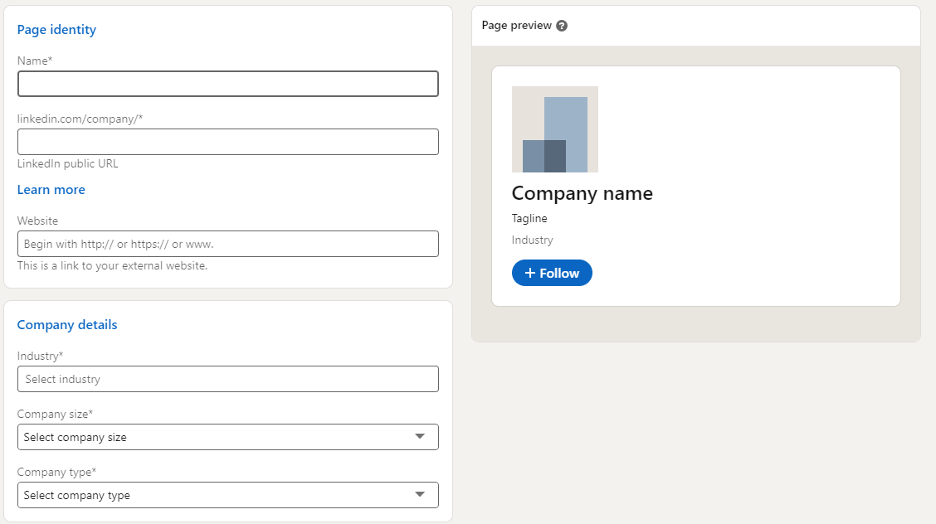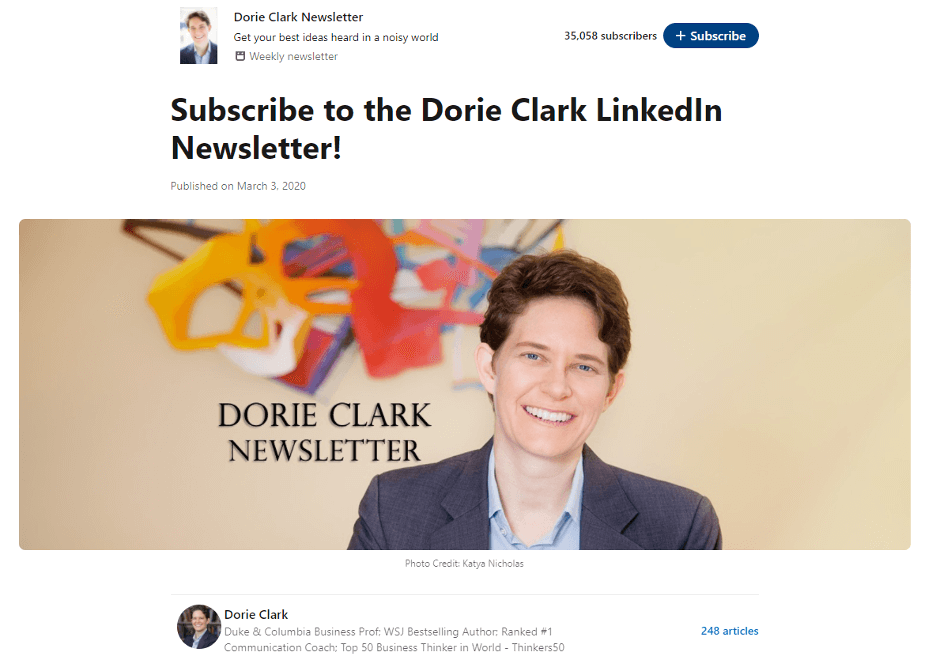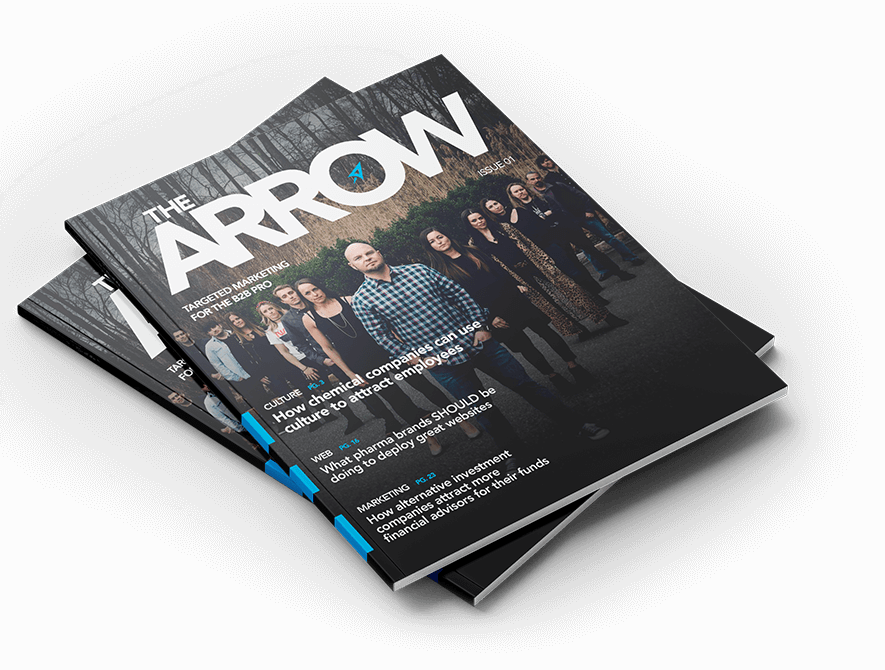The Top 5 Changes a LinkedIn Management Service Would Do To Your Business Account
Chris Mulvaney is the CEO of CMDS. I make things... I’m the creative entrepreneur with passion for (re)making brands and inventing solutions to problems no one knows exist.
Are you having trouble with your LinkedIn management? Needing to constantly check your company’s LinkedIn page in search of what to post and share without an objective can lead to a lack of good content altogether. While we are always explaining the importance of keeping a steady flow of content going, we also mean that it should be of good quality.
If you’re posting ten times per day but the content isn’t great, then it’ll do more harm than good for your company. This is why knowing the main LinkedIn management steps for any company is important.
In this article, we will walk you through what type of content you should make, how to optimize your profile and many other vital changes that will make your account look its best.
Like always, if you have any questions or doubts about any of the changes we talk about here, feel free to leave us a comment down below and we’ll get to you as soon as we can.
Pinpoint What the Account Should be Focusing on
Pinpoint What the Account Should be Focusing on
Nothing makes you waste your time more than creating content with no clear direction in mind. This means no customer persona, no idea of what to post, and no clear intention when posting.
The first step before even making the account, if you don’t have it already, is to set your goals and objectives straight. Make sure you know why you’re posting the content and for whom.
Also, think about what your short and long-term goals are with the account. Are you just looking to grow and get leads off LinkedIn? Or maybe you want your business to be one of the leaders on LinkedIn when it comes to your industry.
Knowing what you want to do with your account will completely change the way you create content and manage it.
Your company’s profile call to actions (CTAs) are going to look a lot different if you’re trying to get them to buy a product from you when compared to getting their email addresses for a newsletter.

Also having a good understanding of who your audience is will not only simplify how much time you need to make content, but it will be a lot more effective than writing to the general public. This is because you’ll know what they are looking for and the type of content they want to consume. Narrowing your audience and focusing on a specific group will do wonders for your engagement.
Remember that when it comes to social media marketing, you want to be specific and have someone in mind when creating and posting content. This makes it a lot easier to attract the right kind of users to follow, share, and engage with your content as well.
All of this should also be monitored by LinkedIn’s analytics tool to know if the posts being made are targeting the right people or not.
After you know why you’re making the content, for whom, and which goals to follow, we can move on to another big improvement that your company’s profile most likely needs.
Optimize Your Company’s Profile
Optimize Your Company’s Profile
While you might think your profile is perfect and there is no need to change anything, more often than not, there is something that could be improved or at least changed a little bit.
If you’re starting a new company account, then even better. It’s a blank slate for you to mold and prepare for your goals ahead.
For the first step, you want to check that you’ve filled out every single box and detail that can better describe your company. This is the first tip LinkedIn shares when you create an account. If you’ve never seen this before, we will add it here for you to see.
To make sure you complete your whole profile, we’ll list the most important parts you should be focusing on after the main information is filled out.

While none of these are obligatory, we highly recommend you add them to take advantage of every single space they give you to write on.
- About Section: This one should be a no-brainer. Use this area to talk about your company in a way that showcases who you are while being able to explain how you can help them with your product or service. Bonus points if you’re able to squeeze in a bit of storytelling when giving the overview of your business. A lot of people go straight into reading your about section to get a good idea of who you are and how you can help them, so make sure to respond to those two questions to the best of your ability.
- Banner: Same as the last point, this is essential and you should have it up as soon as you start making changes to the account. It should be targeting your customer persona and look as welcoming as possible. Consider making it a habit to change it from time to time. Set a 2-3 month alarm that reminds you to give it a quick change and even refresh some information that might have changed in that timeframe.
- Showcase Pages: If your company owns several brands, this is the best place for you to put them. While we recommend creating showcase pages, we advise you against making too many since you will fragment your audience a lot more. Instead, consider grouping several services or products in a single showcase page.
- Tagline: This will be the first line of text a user will read after they go into your profile, so make sure it’s to the point and as focused on your customer persona as possible. Remember to add at least one SEO keyword to help with the algorithm.
- Call To Action Button: This one is VITAL for your profile since one of your main goals is for people to click it. Think it through and make sure the CTA aligns with your current social media objectives.
- Specialties: Make sure people can see this and know exactly what the company can do for them. Look for a way to add your keywords in here as well.
There are other areas you need to focus on when finishing all of your company’s information. However, these are the most important ones for us and the sections you should pay the most attention to.
Alright, so you now have your company’s profile up to date and looking amazing, now what? Well, now you start creating content for it. Let’s dive in, shall we?
Establish a Content Strategy and Calendar
Establish a Content Strategy and Calendar
There is no better way to know what content to post than by taking the time to create a content calendar. This will help you tremendously and save you a lot of time in the process.

While you can share content calendars with other social media platforms, you have to remember that LinkedIn has some unique features like being able to post a full article with their integrated article creation tool. That means you should be taking them into consideration when trying to just add the same content from your Facebook page directly onto LinkedIn.
What most brands do is copy and paste the content from other social media. If you want to grow in less time and be able to generate leads and sales on your account, then consider using all of the features LinkedIn offers you.
While not a unique feature, making some time to do a LinkedIn live session once every 2 weeks or so is a fantastic idea.
A unique feature that isn’t talked about nearly as much as it should be are the newsletters you can make for your company. They let you invite people to join any time. On top of that, you can send subscribers a weekly or bi-weekly newsletter with articles and posts they would enjoy.
What makes the newsletters so unique? They send the user a notification whenever it gets sent to them. Think of the LinkedIn newsletters as an upgrade from traditional email newsletters that have existed for quite some time. The difference is that the user doesn’t have to get out of the app and provide their email in order to receive it.
The Top 5 Changes a LinkedIn Management Service Would Do To Your Business Account
This makes it a lot more likely for people to sign up for your newsletter when compared to a traditional one.
If you want to know even more about LinkedIn’s latest features, be sure to check this article. In it, we go through some of the most important features you should use if you’re looking to grow and get leads off of LinkedIn.
Now that you have all of your content created and you mixed it up to keep things engaging, what comes next? Now, this next process isn’t as exciting but it will completely change the way you make content after a while.
Use the Analytics Tab
Use the Analytics Tab
Most people don’t take advantage of this area on LinkedIn since they are just copying a content calendar from another social media platform. They automatically assume that the metrics are going to be the same.

That could not be farther from the truth. Remember that LinkedIn, despite it getting a lot more casual than it was a few years ago, is still made for professionals who want to connect with others from their industry.
It’s a lot different from, let’s say, Instagram where the audience is a lot broader and even more laid back than LinkedIn. This means the strategies you use and how you word certain parts of your posts matters more.
But how can you tell if your content is working or not?
That’s where metrics come in! The idea is for you to monitor how your content is doing every week. This will enable you to test certain changes to further improve your numbers.
There are two ways you can do this. You can either use a software tool like Hootsuite to have all of the metrics of your social media platforms in one place or you can use the traditional method and check out the analytics on LinkedIn itself.
For the sake of simplicity and since we’re only talking about LinkedIn here, we’ll use the traditional method.
LinkedIn’s company page has a complete section dedicated to analytics. You can find the section right below your company’s name and the logo.
When you click on the “analytics” button, it will open a window and show you five options to check out.
Let’s go over each one and tell you why they are important for your business as a whole.
- Visitors: This is the page that lets you know how many users have clicked on your company’s profile, which of them were unique visitors (or first-time visitors), and the number of users who clicked on a custom button while they were there. There’s a detailed visitor demographic chart you can check if you want to know in which industry they work. The number of visitors you gain can be boosted with well-thought-out CTAs that ask them to check something on your profile and good content that invites them to learn more about your company.
- Updates: This is your standard engagement page where you can check how many likes, comments, and shares people made when seeing your content. This will be the page you’ll need to check the most if you want to know the overall engagement your company has with your followers and the community overall. In general, you want your engagement to be at least 10% of your total follower count. This ensures a following that is interested in the content you’re posting and lends legitimacy to your account as a whole.
- Followers: As the name implies, it will show you the number of followers you have as well as the number of followers gained over the course of 30 days. There’s a very simple chart for you to see if someone’s unfollowed you or followed you. Below that is a detailed view of each of your followers.
- Competitors: On this page, you’ll be able to compare how your company’s account is doing against your competition. LinkedIn adds their suggested competition automatically, but you can add the ones you know for certain are your main competitors. This page is divided into two sections, the follower metrics which let you know how many followers they have and gain over the course of a month. And you also have the organic content metrics which show the amount of engagement alongside the total amount of posts they have made over the past month.
- Employee Advocacy: This page is where you get to monitor all of the posts and recommendations being shared by the company’s workers. It is fantastic since it gives you a very detailed view of all of the content the company’s workers are sharing and what metrics it has brought to the company as a whole. While this page will not be as widely used as the others, it’s great to think about a strategy that involves your company’s employees. This is because it both exposes your brand to a bigger audience and helps showcase that the company cares about its staff.
Out of those five pages, the ones you’ll be checking the most will be updates and visitors. They are the best ones to show you if your content is performing well and whether people like it or not.
You can also go to your main feed and check the impressions on a certain article as well. This helps you know what content received more attention than others and helps you create more posts similar to it.
While reading metrics isn’t the most fun for a lot of people, it’s essential since it lets you know if the content you’re making is doing its work or not. Try to check all of these metric pages once per week and tweak your content calendar if needed.
Now, what about if you’re trying to create content to humanize your company and make sure your followers get to know your brand a bit more? Let us show you what we would do.
Give Your Employees the Spotlight
Give Your Employees the Spotlight
Getting your employees interested and willing to post content on LinkedIn for both the company and their account is amazing for your brand. This is because you want as many people to share your content and engage with it as possible. Having your workers share and engage with your posts on a regular basis will not only boost its impressions, but it will show other users how much the company means to them.

If they have written articles about news or trends from your industry, ask them if you could repost the article on the company’s account while giving them credit.
If they post about something related to your industry that could fit your company’s account then consider sharing and commenting on their post.
You want to make sure other users know how engaged you are with your workers and how much they care for the company.
Remember that you can check all of the metrics from your workers and how it impacts the company’s account on the employee advocacy page on the insights tab.
Conclusion
Conclusion
Now that you know all of the changes a LinkedIn management service can do to improve your account, you can focus on the important points.
Let’s do a quick rundown to make sure that you remember all you need to do in order to manage your business account successfully.
The first step you want to take is to establish your goals and objectives. Without any clear direction, your posts and content will be all over the place. You want to make sure your goals are achievable and specific, like “getting one thousand followers in 3 months” instead of a very broad “gain more followers.”
After you have your objectives set, the next vital step is to optimize your business account and make sure it looks the best it can. You do this by going through all of your pages and making sure everything is filled out and that it targets your customer persona as much as possible.
If you’re unsure about the most important parts you need to fill out, we’ll name them here once again.
- About Section
- Banner
- Showcase Page
- Taglines
- CTA Buttons
- Specialties
These are, in our opinion, the ones you should think about the most. You want to make them look as great as possible. All this being said, the rest of the information and sections that you need to complete are just as important.
So you have your business account looking amazing, now what? You are ready to create a content calendar for LinkedIn.
Remember that while you can use the same content calendar from another social media platform like Facebook and call it a day, we recommend you make a separate content calendar for LinkedIn to take advantage of their unique features.
The biggest two features you should add to your content calendar should be article creation and the LinkedIn Newsletter.

Remember that LinkedIn lets you post a complete article made with its own article creation tool. This allows you to express and explain a topic that you might not be able to in a video or a short post.
The LinkedIn newsletter is similar to a normal email newsletter but on LinkedIn. These are amazing since they notify subscribers whenever you make a new one.
All of your content is ready for the month. Now you need to wait for it to start getting posted and analyze how it’s doing.
To check metrics, remember you have two options, both a social media marketing tool, like Hootsuite. If you want all social media metrics in one place, you can use LinkedIn’s built-in analytics tool.
We explained how you can use the built-in one instead so you have a clear understanding of what each metric means. Also, the metrics LinkedIn lets you analyze are very good and well thought out, so don’t worry about missing out on features by using this instead of a social media marketing tool.
Last but not least, we talked about how important it is to give your employees the spotlight in order to help humanize the brand. When they post content about the company by themselves, it also helps you reach a bigger audience, which is amazing.
Now that you know all of the information, it’s time for you to put it into practice and see how your growth and engagement goes up month by month!
As always, if you have any questions or need some clarification on anything, feel free to leave us a comment down below and we’ll get to you as soon as we can.





